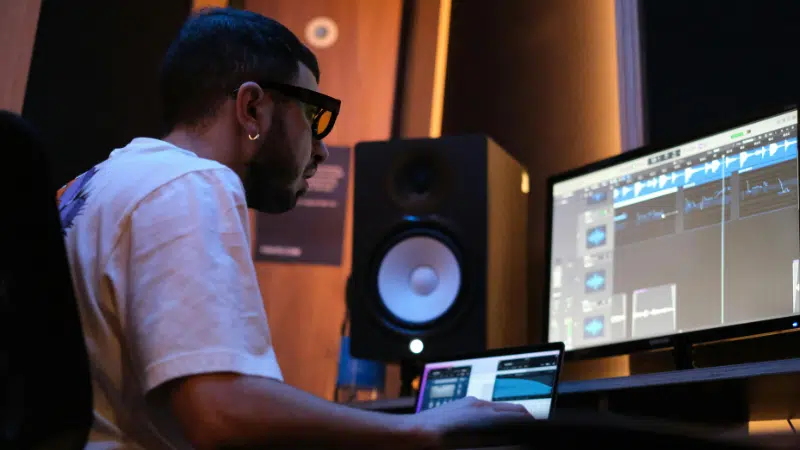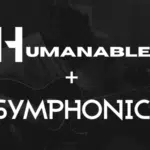Great labels aren’t just known for their rosters; they’re known for what they stand for, how they show up online, and the world they create around their artists. Great music gets attention, yes. But great branding builds loyalty. If you’re trying to build a strong brand around your indie label that lasts, this post is for you. Here’s everything you need to know…
How to Build Your Brand as an Independent Label
Look At Who’s Doing It Right
In today’s wildly crowded music scene, independent labels need more than just great music to stand out. Branding is what helps you carve out your own space, connect with the fans, and create a lasting impression that turns casual listeners into lifelong supporters.
That said, good branding comes in many forms, but the best examples have one big thing in common: they make you feel something. Whether that’s through visual style, storytelling, or how they build community, two standout examples of branding done right include Soulection and Lofi Girl.
What started as a radio show has grown into a global music and culture brand. Soulection stands out for its genre-blurring sound, clean and classic visuals, and storytelling that highlights both discovery and diversity. Their brand flows across everything from curated playlists and events to merch drops and artist collabs.
On the other hand (and possibly one of the most recognizable examples of branding in the digital space), Lofi Girl built an entire universe around one character and a specific vibe. From the endless livestream to album artwork, social posts, and animated content, the brand is instantly recognizable and emotionally resonant. It’s a great example of how digital presence, consistency, and storytelling can turn a niche sound into a global phenomenon.
Both of these labels offer more than just music. They offer a feeling, a mission, and a community that fans want to be part of, and that’s exactly what you should be striving for.
Define Your Visual Identity & Tone
Before you get into logos and color palettes, zoom out for a sec. Think about what inspires you. What kind of music, art, or aesthetics have always resonated with you? What do you want people to feel when they come across your label for the first time? Your brand should be a reflection of your values, taste, and the kind of creative space you’re building, not just what’s trending.
Once you’ve got a clear sense of what kind of world you want to build, the next step is shaping how it looks and sounds. Your visual identity and tone are what people first notice when they come across your label. That includes everything from your logo on a playlist or a teaser on Instagram to your website homepage. Make sure you think about these things:
🎨 Logo & color palette: Is your look clean and minimal? Bold and experimental? Choose visuals that reflect your label’s energy.
💬 Typography: Fonts definitely carry the mood. A sleek sans-serif says one thing; hand-drawn lettering says something else entirely. (Comic Sans haters, unite!)
Imagery: The photos, artwork, and motion graphics you use should feel cohesive and unmistakably you.
🔊 Tone of voice: Are you casual and let humor shine through? Poetic and more abstract? Professional and polished? Just pick a lane and stick with it.
This identity should show up consistently across all your digital touchpoints (aka your social feeds, artist releases, email headers, even your SoundCloud banners). Consistency builds trust, and over time, it becomes your signature.
Build a Community Around Your Label
Strong branding isn’t just about attracting fans; it’s about bringing people together. The best indie labels don’t just release music and forget it; they create spaces where listeners feel like they belong. That kind of connection builds not just loyalty, but word-of-mouth that money can’t buy.
Start by sharing your process, whether it’s behind-the-scenes studio footage, label updates, or playlists your team is vibing to. Make sure to engage directly with your audience through Q&As, polls, or live chats so it feels like a two-way conversation, not just a broadcast. Next, celebrate your community by highlighting fan-created content, reposting tags, or giving shoutouts to your artists. And whenever possible, try to host events as much as you can! From virtual listening parties to full-blown label showcases, these events turn digital connections into real experiences.
And don’t forget about your digital presence beyond social media. A clean website, an email newsletter with genuine updates, or a YouTube series can deepen your connection with fans by giving them more ways to engage and stay in the loop. These platforms are what help build a lasting ecosystem surrounding your label.
💡 PRO TIP: Building a community takes time, and if you’re looking for a step-by-step playbook on how to turn listeners into loyal fans, we’ve got you covered. Check out “How To Build an Engaged Community Around Your Label” for the full breakdown.
——
Want to learn more? 📚 👀
Pre-Release Day Tips to Maximize Your Music Video Performance
SEO for Musicians: Why It Matters and How To Use It
How To Turn One Release Into an Evergreen Content Strategy
The Fan Journey Breakdown: What Marketers Know That Most Artists Miss
——
Align Your Artists With Your Brand
Your label’s roster should be an extension of your brand’s identity and values. When your artists align with your label’s ethos (musically, visually, and culturally), it creates a stronger, more cohesive story that fans can connect with.
Take Mau5trap, for example (one of my personal faves). Founded by deadmau5, Mau5trap has built a reputation for badass, innovative electronic music with a strong underground and experimental edge. The label’s artists typically share a commitment to pushing creative boundaries, both sonically and visually. This clear artistic alignment makes Mau5trap feel like a tight-knit community with a distinct personality, not just a typical label. They stand out in a way that is uniquely them, and the artists on their roster absolutely represent that vibe.
- When building your own roster, ask yourself: Does this artist’s sound and style vibe with what your label stands for? Do their values and audience mesh with your community? When the answer is yes, everyone wins. The artist gains support from a like-minded fan base, and your label strengthens its reputation and authenticity.
This alignment goes beyond just the music. Think about how your artists present themselves visually and in interviews, their social media presence, and how they engage with fans. Consistency here makes your label feel like a curated space rather than just a collection of random acts.
Remember, it’s okay to be selective. Building a brand isn’t about signing everyone; it’s about staying true to what makes you unique and curating a roster that reflects that identity.
Create a Brand Guide
A brand guide is your label’s playbook. Exactly what it sounds like, it’s a reference that keeps your team and artists on the same page about how to represent your identity clearly and consistently across platforms. It doesn’t have to be complicated; just a simple document can save a lot of headaches down the line.
Here’s what to include:
- How and where to use your logo (and what not to do with it)
- Your color palette with exact values
- Fonts for headings, body text, and social posts
- Your label’s tone of voice, with sample phrases
- Visual style guidelines for photos, artwork, and graphics
- Social media approach, including hashtags and engagement style
- Design rules for merch and packaging
- Tips on how artists should represent your label visually and verbally
Try to keep your brand guide simple and flexible. It’s less of a strict rulebook and more of a living document that changes as the label evolves. Just remember that as you grow, make sure to update your guide to reflect those changes.
In addition, everyone on your team should have access to this doc and understand why it matters. By starting with a clear guide from the beginning, everyone stays on the same page and shows up strong and consistent, no matter who’s posting, designing, and the like.
How To Evolve Without Losing Your Identity
It’s important to remember that your label’s brand isn’t some static, set-in-stone thing. It should grow and change as your label evolves. Maybe you start with a very raw, experimental vibe, and as you sign new artists or reach new audiences, your look and tone shift. That is completely normal, my friend.
The key is to evolve thoughtfully. Make sure any updates to your visuals, messaging, or overall vibe still reflect the core values and personality you’ve built. If you’re making big changes, communicate them clearly to your audience so they’re not caught off guard. All of this helps keep trust and loyalty intact, no matter where your vision takes the brand.
💡 PRO TIP: Make sure you regularly revisit your brand guide to see if it still fits who you are and where you’re headed. A brand that adapts while staying true to itself feels authentic and is what keeps fans engaged over time.
To wrap things up…
Clarity and purpose truly go a long way. If you want your label to be memorable, you can’t try to be everything, do everything, and appeal to everyone at once. Just focus on building your unique look and voice, and keep it as consistent as you can wherever you show up. Internally, that also means making sure your team is aligned, knows their roles, and works toward the same vision. Without clear guidelines, roles get blurred, communication breaks down, and things start slipping through the cracks. If you haven’t quite mastered this yet, check out this guide to get a full breakdown.
In the meantime, choose artists who embody your label’s spirit. Be selective. Build genuine connections with your community. These connections will drive your success more than any flashy campaign ever could. And last but not least, trust the process. Creating a label that is authentic, distinctive, and true to your vision takes time. But when you do it right, it becomes more than just music; it becomes a movement that lasts a lifetime.
You got this!



